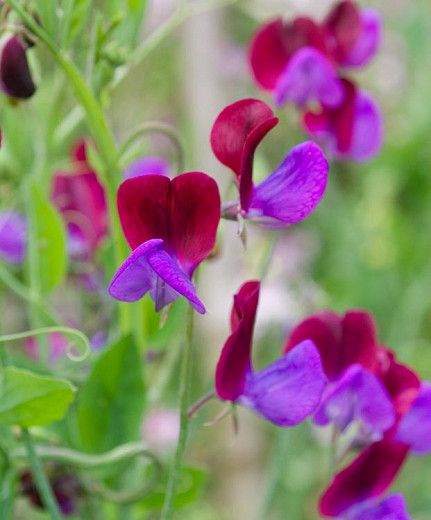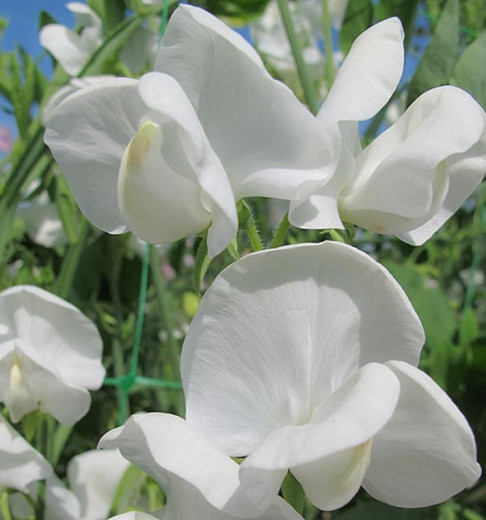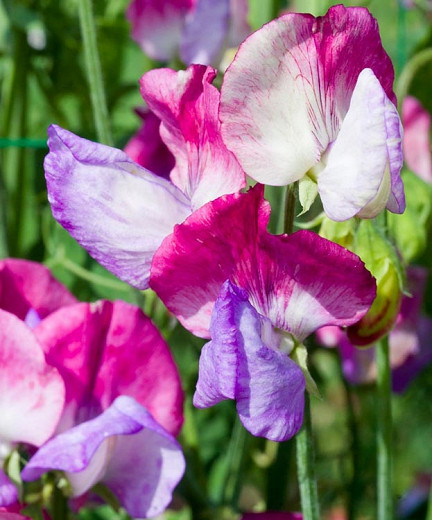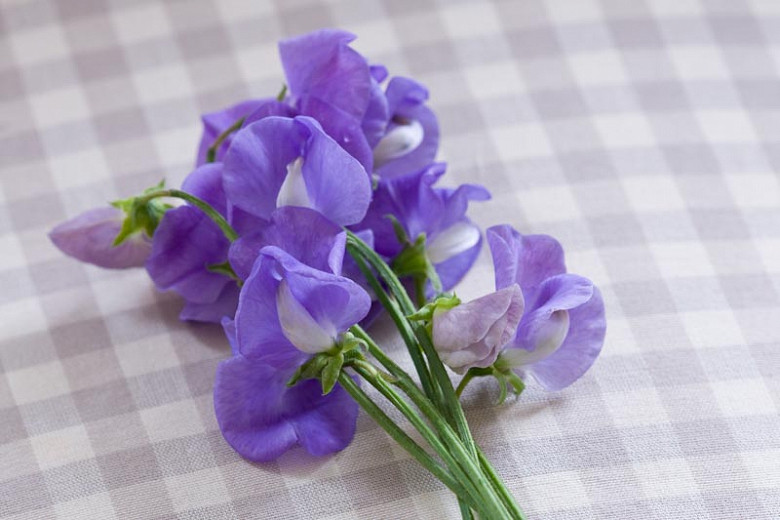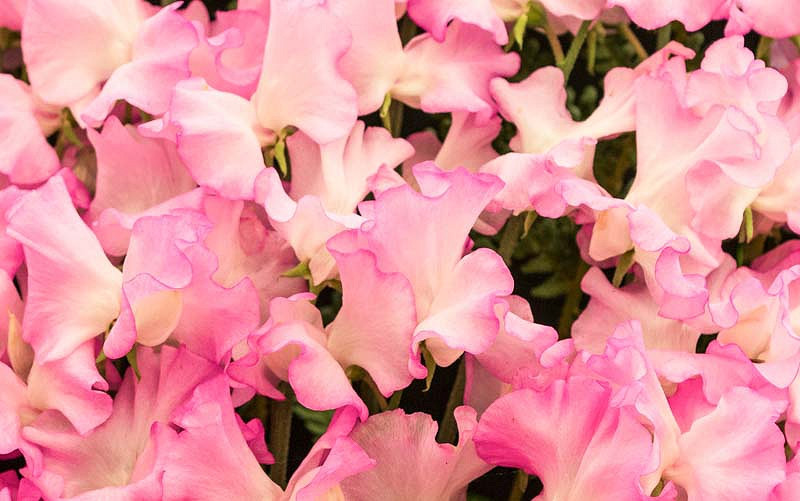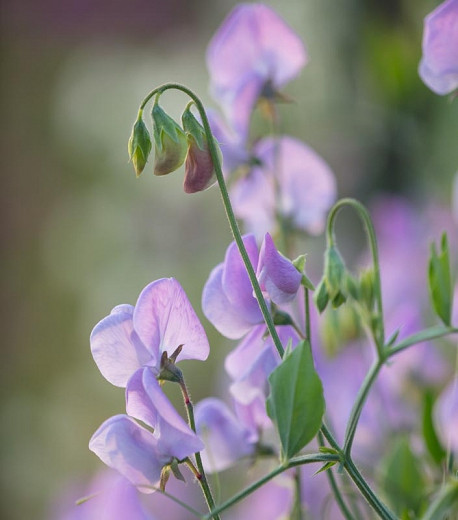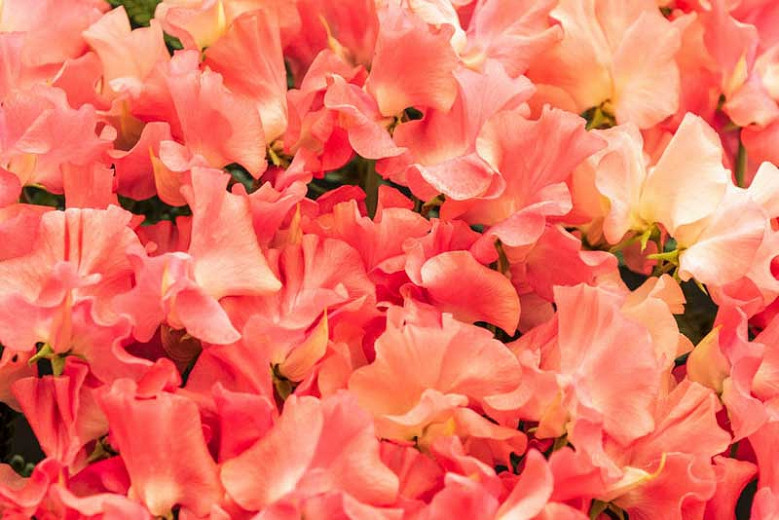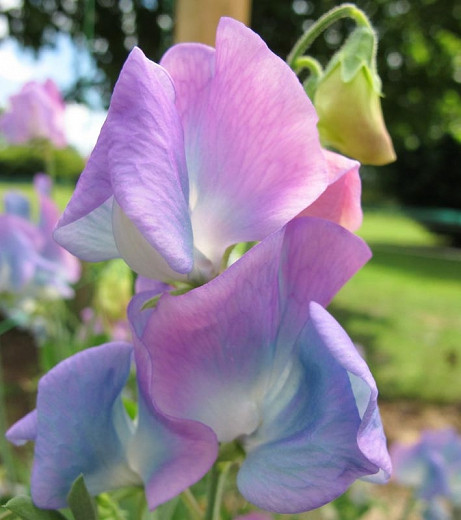Lathyrus odoratus Cupani (Sweet Pea)
A favorite heirloom Sweet Pea variety, Lathyrus odoratus 'Cupani' is the most primitive form of Sweet Pea known but also one of the most fragrant. Discovered in 1695 by a Sicilian monk, Father Francis Cupani, who found this intensely scented wild Sweet Pea growing near his monastery, this very attractive Sweet Pea features violet and deep crimson blooms. It is often confused with 'Matucana' which usually bears four flowers per stem, and larger flowers reminiscent of the grandiflora varieties. 'Cupani' bears only two flowers per stem, and has noticeably smaller flowers but their color and fragrance are much more intense. 'Cupani' is reported to be more heat tolerant than most Sweet Peas. Since it self-sows, it will remain present in your garden and provide year after year a colorful show. It is ideal for providing cut flowers that will fill your home with their heady perfume. Did you know that the more you pick them the more they will continue to flower?
- Native to the Mediterranean region, Sweet Peas grow and bloom best in cool, mild climates where they enjoy a long blooming season, extending from spring to fall. Sweet Peas resent hot and humid weather.
- Grows up to 6-8 ft. tall (180-240 cm) and 12 in. wide (30 cm).
- Sweet Peas love full sun or light shade in rich, humusy, medium moisture, well-draining soils. The best performance occurs in cool soils with good air circulation. A heavy application of mulch will help keep the roots cool and moist. Incorporate well-rotted organic manure before planting and apply a balanced liquid fertilizer every two weeks throughout the growing season. Avoid overhead watering.
- Sweet Peas are wonderful when massed in borders, containers, or climbing and twining on arches or arbors.
- Attractive to bees and butterflies, deer generally ignore Sweet Peas.
- In Zone 7 or colder: Get a jump on the season by starting Sweet Peas indoors. Plant Sweet Peas out into the garden in very late winter or early spring as soon as the soil is dry enough. In Zones 8, 9, or 10: Plant Sweet Peas in late fall, so they can develop and bloom in late winter and early spring. Before planting, soak the seeds in water for 24 hours in order to hasten germination. You do not need to soak seeds in a temperate climate. Once planted, germination can take 7 to 15 days, depending on the soil temperature.
- To encourage bushy growth, pinch off the tops when plants are 6 in. tall (15 cm), not before or you will promote side-shoot development.
- Deadhead spent flowers regularly to encourage new blooms and maintain a neat appearance. Do not hesitate to cut flowers for your bouquets as this will force your Sweet Peas to produce additional stems for bloom. Cut back hard and fertilize if you notice little flowering after the first flush of bloom.
- Propagate by seed. Sow in a cold frame in early autumn, early spring or in-situ in mid-spring
- Sweet Peas are susceptible to slugs, snails, Pythium root rot, powdery mildew, rust, gray mold, and various leaf spots.
- Sweet peas are NOT edible! Acute ingestion may cause mild stomach upset.
Requirements
| Hardiness | 2 – 11 |
|---|---|
| Heat Zones | 1 – 8 |
| Climate Zones | 1, 2, 3, 4, 5, 6, 7, 8, 9, 10, 11, 12, 13, 14, 15, 16, 17, 18, 19, 20, 21, 22, 23, 24 |
| Plant Type | Annuals, Climbers |
| Plant Family | Lathyrus – Sweet Peas |
| Exposure | Full Sun, Partial Sun |
| Season of Interest | Spring (Late)Summer (Early,Mid,Late)Fall |
| Height | 6' – 8' (180cm – 240cm) |
| Spread | 1' (30cm) |
| Spacing | 2″ – 3″ (5cm – 7cm) |
| Water Needs | Low, Average |
| Maintenance | Low |
| Soil Type | Loam, Sand |
| Soil pH | Acid, Alkaline, Neutral |
| Soil Drainage | Well-Drained |
| Characteristics | Cut Flowers, Fragrant, Showy |
| Tolerance | Deer |
| Attracts | Bees, Butterflies |
| Garden Uses | Arbors, Pergolas, Trellises, Beds and Borders, Patio and Containers, Wall-Side Borders |
| Garden Styles | Informal and Cottage, Mediterranean Garden |
